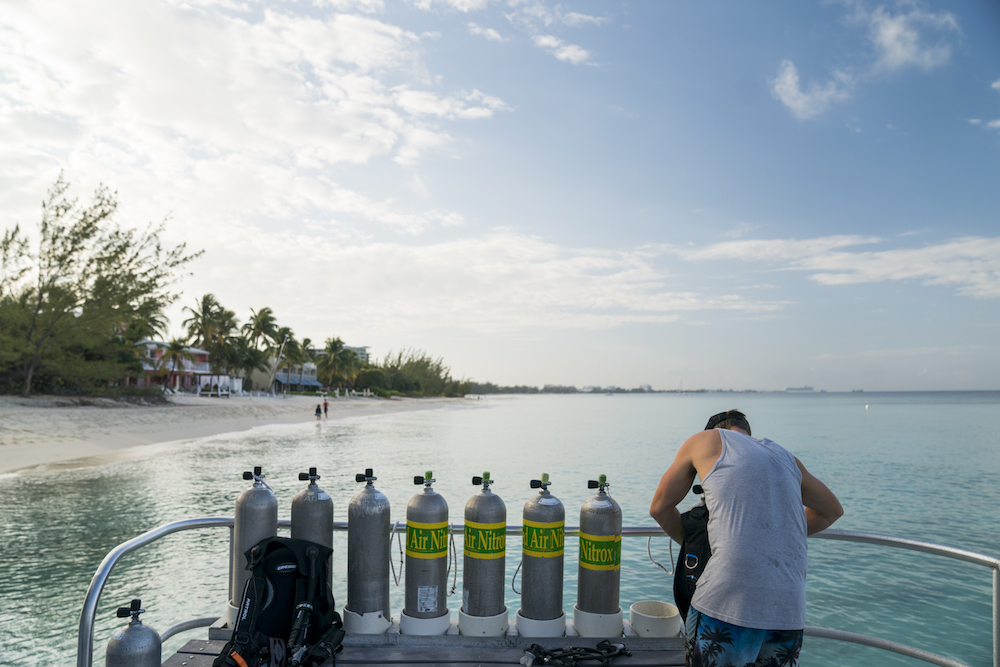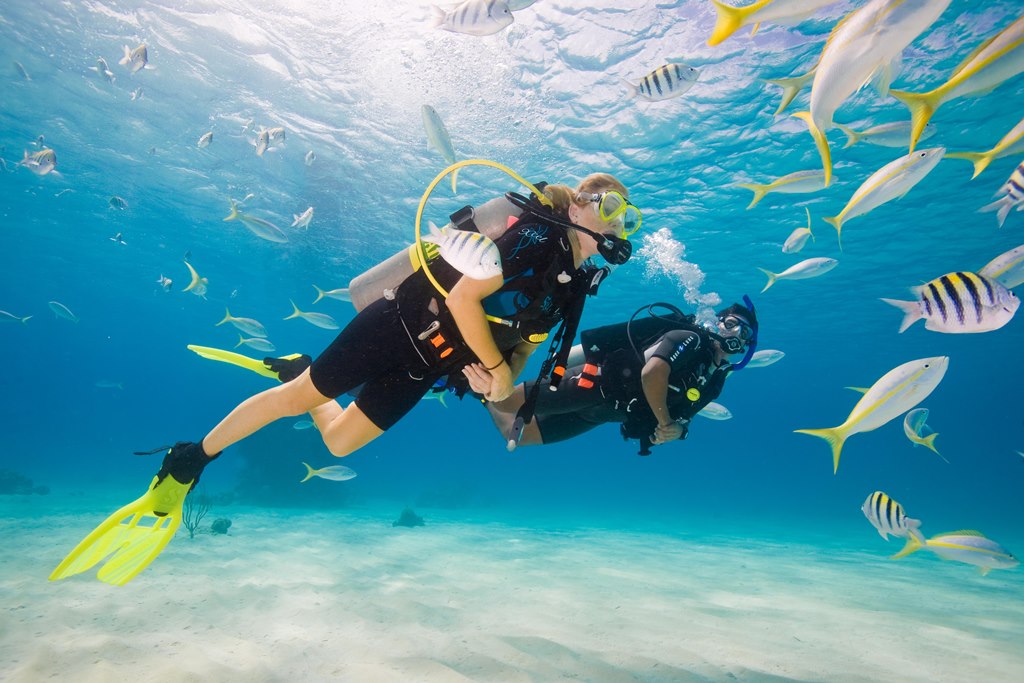Not long ago, enriched air nitrox was something only cutting-edge technical divers used. Today, Enriched Air Diver is PADI®’s most popular specialty course. Here’s what you need to know about earning an enriched air certification and the pros and cons of diving nitrox.

What is nitrox?
Humans are accustomed to breathing air that’s approximately 79 percent nitrogen and 21 percent oxygen. Technically, any mixture of nitrogen and oxygen is nitrox – that includes the air you’re breathing right now.
In the scuba realm, “nitrox” (also known as enriched air nitrox and EANx) typically describes breathing gas that is 32-36 percent oxygen. More oxygen means less nitrogen, and that has some nice benefits.
As you learned in the Open Water Diver course®, nitrogen absorption is one of the things that limits our ability to explore underwater. Enriched air nitrox allows you to:
- Extend your bottom time
- Shorten surface intervals
- Dive deeper on repetitive dives
Is a nitrox certification “worth it”?
If you fancy staying down longer and getting back in the water sooner, then yes; getting nitrox certified is worth it. You can take more photos, wave to more turtles, and spend more time exploring at depth.
Many divers wait too long to try nitrox. They don’t realise the benefits of an enriched air certification until they’re on holiday. Imagine this scenario:
There you are, on the second day of your diving adventure. Your first dive was deep, below 30 metres/100 feet. After a relaxing surface interval, you’re eager for dive two – a wreck.

During the briefing, the divemaster tells divers on air to mind their depth and don’t go deeper than the wreck’s main deck. Enriched air divers, however, can explore the entirety of the ship. You watch with envy as the nitrox divers drop to the bottom, follow a stingray conga line, and discover buried treasure.
All joking aside, if you plan to do a multi-day dive trip, a liveaboard, etc., do yourself a favor and get nitrox certified. Nitrox allows you to spend more time at depth compared to diving on air, which means you’ll get a lot more out of your diving holiday.
Even if you’re only making one dive, but it’s deeper than 15 metres/50 feet, nitrox is beneficial. Consider this:
- If you plan a dive to 21 metres/70 feet on air, your maximum no-stop limit is 40 minutes.
- If you’re diving 32 percent enriched air, the no-stop limit is 60 minutes
(unless you use up the air in your tank before then).
What are the pros and cons of nitrox diving?
If enriched air is so great, why doesn’t everyone use nitrox all the time? Good question, there are a few reasons:
- Cost – enriched air tank fills typically cost more than regular air fills
- Depth limitations – the maximum depth limit for nitrox is different than air and depends on the blend (something you’ll learn as part of your nitrox certification).
- Availability – not every dive shop offers enriched air
- Cylinder requirements – you need a dedicated cylinder for enriched air fills
Start Your Nitrox Certification Online
Getting nitrox certified only takes a few hours. You can complete most of your nitrox training online. A short, in-person session with a PADI Instructor where you’ll practise analysing air (and a few other things,) is all it takes to finish up. There are two optional dives.
You may have heard the nitrox course is challenging and you have to use multiple dive tables – not anymore. PADI’s nitrox course was updated several years ago. Now you use a dive computer for most everything.
A Few More Reasons to Get a PADI Nitrox Certification
Start your nitrox certification today by enrolling in Enriched Air Diver online. Questions? Contact your local PADI dive shop.
Further Reading
PADI Enriched Air Diver Course Overview
4 Reasons Why Enriched Air Nitrox Should Be Your Next Specialty
The 11 Best Nitrox Diving Destinations

 Private Scuba Tuition – Learn Scuba Skills.
Private Scuba Tuition – Learn Scuba Skills.
Leave a Reply
Want to join the discussion?Feel free to contribute!